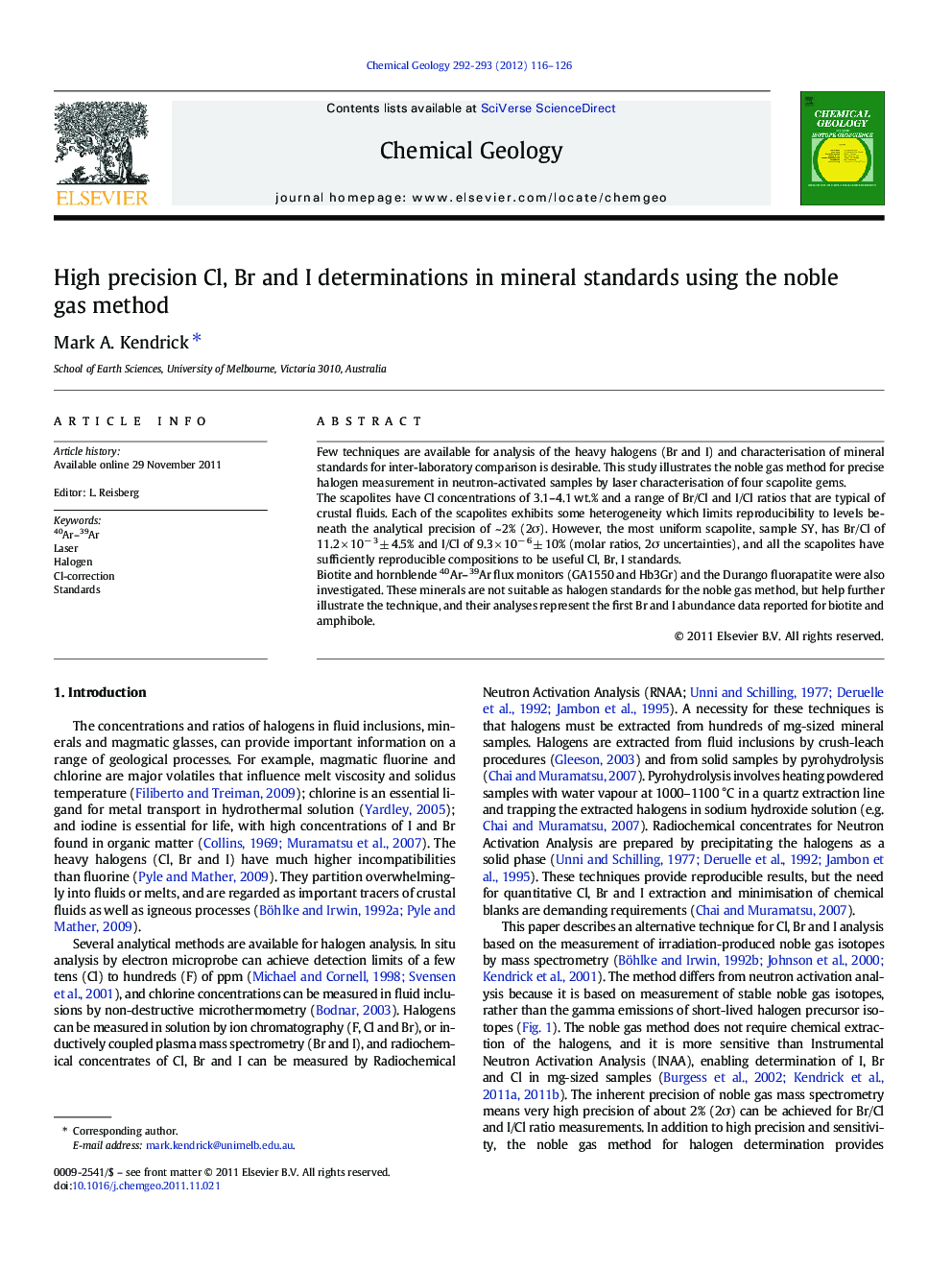| کد مقاله | کد نشریه | سال انتشار | مقاله انگلیسی | نسخه تمام متن |
|---|---|---|---|---|
| 4699557 | 1637654 | 2012 | 11 صفحه PDF | دانلود رایگان |

Few techniques are available for analysis of the heavy halogens (Br and I) and characterisation of mineral standards for inter-laboratory comparison is desirable. This study illustrates the noble gas method for precise halogen measurement in neutron-activated samples by laser characterisation of four scapolite gems.The scapolites have Cl concentrations of 3.1–4.1 wt.% and a range of Br/Cl and I/Cl ratios that are typical of crustal fluids. Each of the scapolites exhibits some heterogeneity which limits reproducibility to levels beneath the analytical precision of ~ 2% (2σ). However, the most uniform scapolite, sample SY, has Br/Cl of 11.2 × 10− 3 ± 4.5% and I/Cl of 9.3 × 10− 6 ± 10% (molar ratios, 2σ uncertainties), and all the scapolites have sufficiently reproducible compositions to be useful Cl, Br, I standards.Biotite and hornblende 40Ar–39Ar flux monitors (GA1550 and Hb3Gr) and the Durango fluorapatite were also investigated. These minerals are not suitable as halogen standards for the noble gas method, but help further illustrate the technique, and their analyses represent the first Br and I abundance data reported for biotite and amphibole.
► Describe and evaluate the noble gas method for precise halogen measurement.
► Utilise a laser probe to characterise four scapolite gems as Cl, Br, I standards.
► Compare efficiency of scapolite standards with other standards including the Bjurbole meteorite.
► Report Cl, Br, I and U data for amphibole and biotite 40Ar–39Ar flux monitors (GA1550 and Hb3gr) and Durango fluorapatite.
Journal: Chemical Geology - Volumes 292–293, 23 January 2012, Pages 116–126